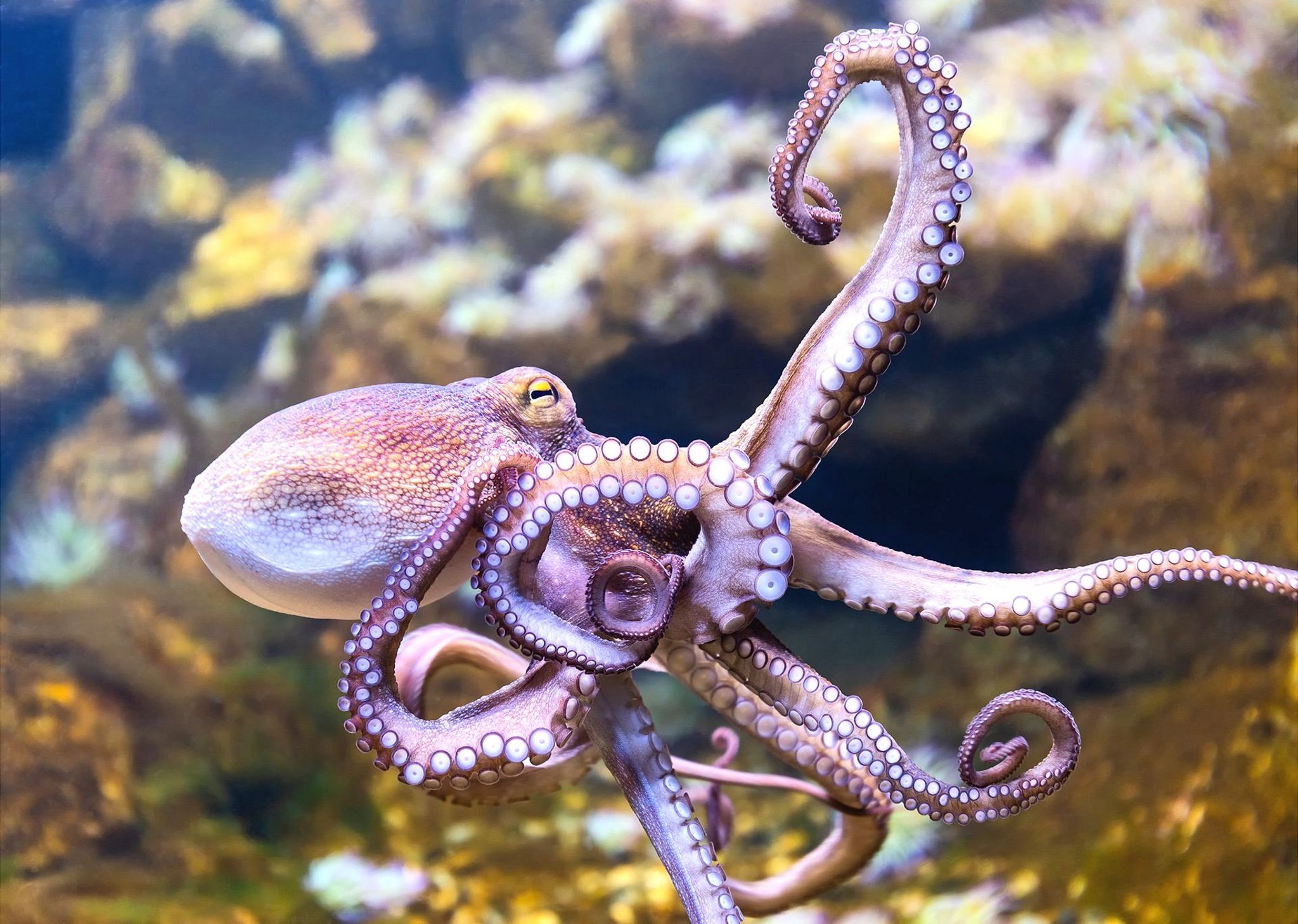
Animals that have multiple hearts typically evolved separate hearts to perform different functions. Rather than evolving one heart to fulfil all of the circulatory system’s essential duties, these animals developed specialized hearts to take on individual assignments. In this article, we’ll explore five of these incredible creatures with multiple hearts.
Octopus
Instead of one or two hearts, octopus has three hearts. Two of the hearts perform the same function, while the third evolved for a different reason. The systemic heart pumps blood around an octopus’s body, while its two branchial hearts pump blood through its two gills. Since octopus blood is very copper-rich, it’s exceptionally viscous. As a result, it requires a significant amount of pressure to pump blood through its body. To compensate, the octopus evolved three separate hearts to take stress off of its systematic heart and ensure it gets enough oxygen into its gills.
Squid
Like octopus, squid also evolved three hearts. Its systemic heart pumps blood around its body, while its two branchial hearts pump oxygen through its gills. All three hearts rest inside a squid’s mantle cavity, a seawater-filled sac containing the organs that carry out respiration and excretion once blood from the systemic heart returns to the branchial hearts, the squid excretes urine, carbon dioxide, and other waste products through openings called nephridial appendages. These openings allow squid to exchange gas and expel waste through their mantle cavity.
Hagfish
The hagfish ranks highly among the animals that have multiple hearts in terms of its sheer bizarreness. An eel-shaped, slimy fish, the hagfish is the only known extant animal to possess a skull but no vertebral column. It’s strange, alien like appearance likely contributed to its less-than-flattering name. In addition, it also contains four hearts, one more than the octopus or squid. One heart serves as the systemic heart responsible for pumping blood throughout the body. The other three operate as auxiliary hearts, which aid the circulatory system in pumping blood.
Cuttlefish
Unlike most mollusks, cuttlefish possess a closed circulatory system. Like squid and octopus, cuttlefish has three hearts. In addition, its hearts operate similarly to its fellow cephalopods. The systemic heart pumps blood throughout the body, while the two branchial hearts’ sole role involves moving blood through the cuttlefish’s gills. Due to its high level of hemocyanin, its blood appears more green-blue than red. Furthermore, its blood must flow more quickly to ensure it remains properly oxygenated.
Earthworm
Last amongst the animals that have multiple hearts, earthworms don’t actually have a heart. Instead, they have a heart-like system called an aortic arch. This closed circulatory system carries food, waste, and respiratory gases throughout the earthworm’s body. In total, five blood vessels make up the aortic arch. The dorsal vessel is located above its digestive tract and primarily moves blood forward.